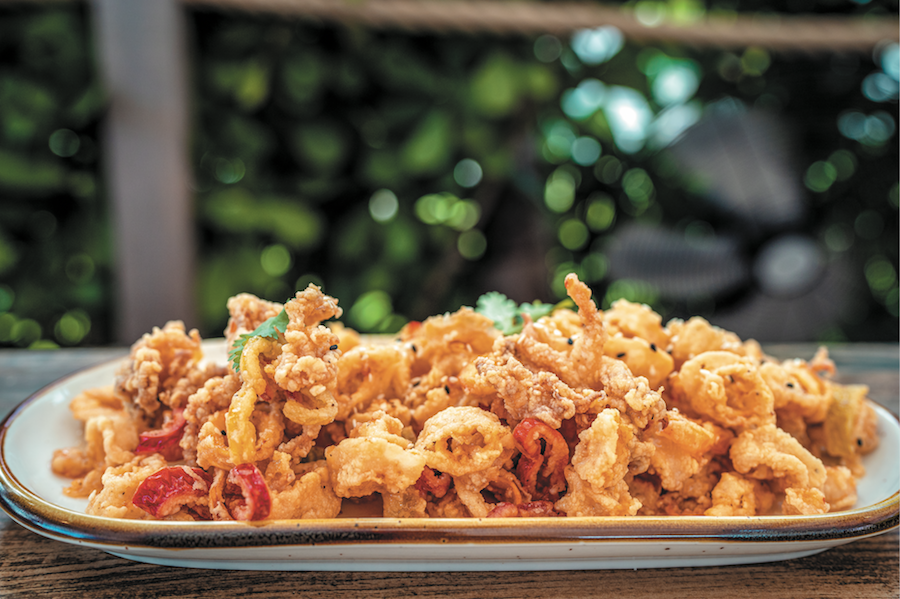But “Old Florida” has no agreed-upon, codified meaning, no standardized set of colors or designs—it’s just some version of Florida in some indeterminate past. Maybe it’s a pastel-colored home on stilts, maybe it’s a mid-century roadside attraction, perhaps it’s embodied in a dockside seafood shack. Or maybe it’s all of those things. But whatever “Old Florida” means, you know it when you see it, as they say. And at The Porch on Anna Maria Island, Old Florida is alive, well and ready to be eaten.
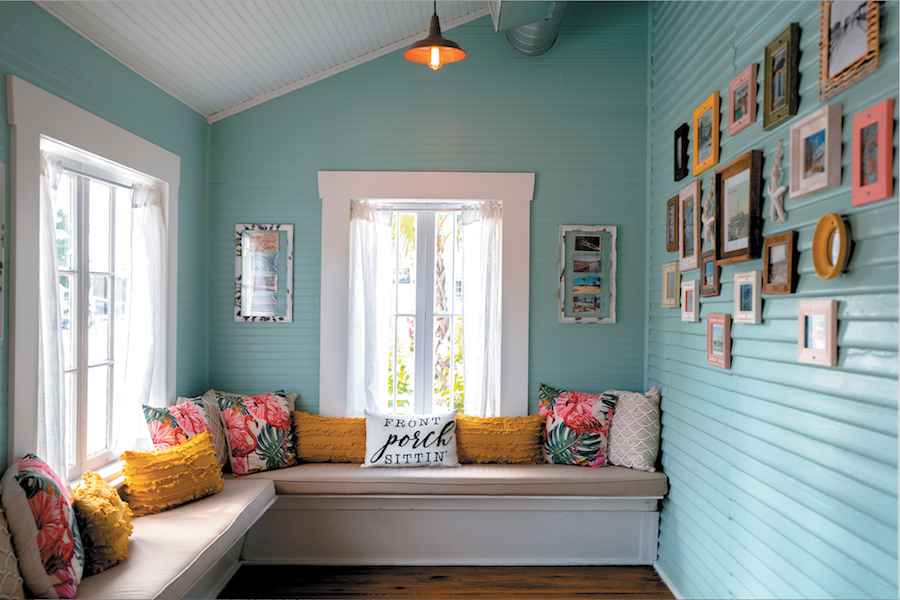
Opened in a faithfully restored century-old structure that has served as a home, a restaurant and a daycare, The Porch first strikes a guest with its charm. From the sandy two-lane road of Gulf Drive, its yellow façade, teal door and crushed shell landscape give it more the feel of a shabby beach shack with a fresh coat of paint than a restaurant with elevated fare. The interior is a cross between fishing shack-chic and history museum, with great attention paid to the island’s history and the building’s original design elements, like all-original windows and remediated hardwood floors.
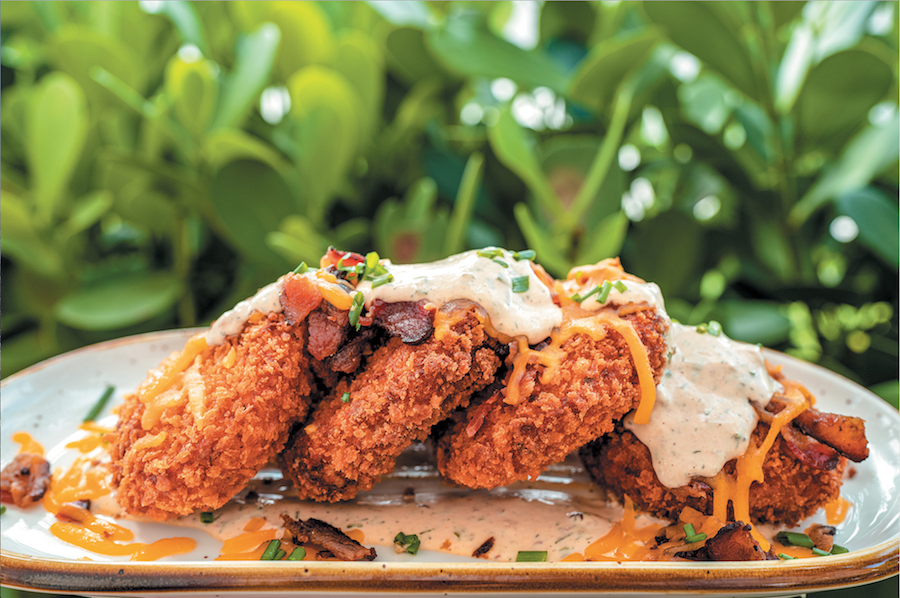
Owners Brianna and Joshua Foster were so committed to maintaining as much of the original building as possible that they even kept the kitchen tiny to avoid tearing walls down. “We don’t even have room for a freezer back there,” jokes Brianna, “so you know all of our food is made fresh and never frozen.” And it seems the whole concept is carefully tuned to the sensibilities of its context and its beach-going clientele.
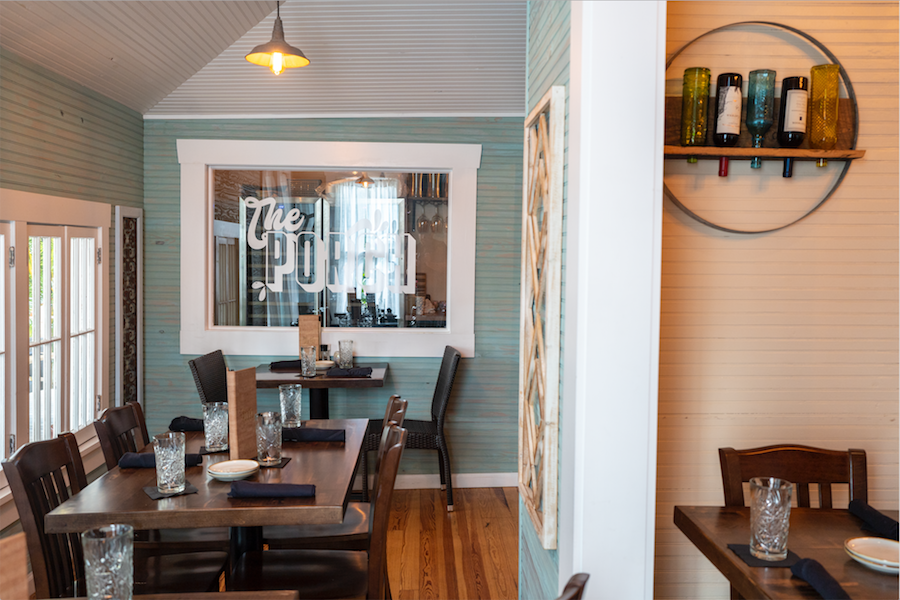
Those sandy sensibilities call for refreshing beverages, first and foremost. An assortment of spritzes, sangrias and mimosas offer something sweet and cool to beat the heat, but The Porch adds small touches that make these their own. The Pasubio lemonade spritz features an amaro from the Dolomite Mountains of Italy’s Trentino region that, unique among amari, makes use of berries. Still, like many amari, Pasubio has pine and herb undertones to go along with a touch of bitterness and smokiness. Lavender accents finish the drink and make it an olfactory delight. The rosé sangria takes the trendy wine cocktail and adds blood orange, fresh orange slices and orange bitters for a bright and light iteration of the Spanish staple that feels distinctly Floridian.
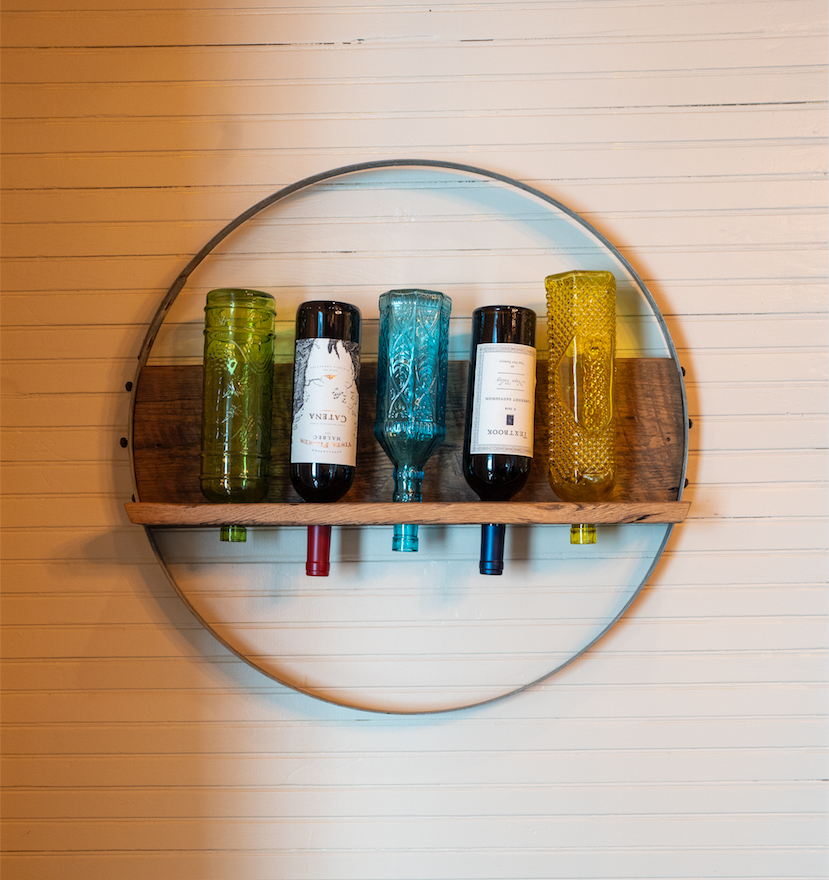
Appetizers are eclectic but deliciously accessible. The coastal calamari comes tossed in the restaurant’s scratch-made ginger sesame sauce and has all the snackability of a potato chip, which means the mound they come served in is best shared with two or more—lest the sweet sauce inspire a diner to eat themselves into guilt. A chef’s-choice charcuterie board also makes for a great first course and conversation starter on account of the glowing, dripping honeycomb, but the potato cakes will assuredly ruin one’s dinner. Stuffed with creamy mashed potatoes inside a crispy exterior, these bacon-topped treats pack all the savory punch of a bacon and sour cream potato skin but go down much more decadently.
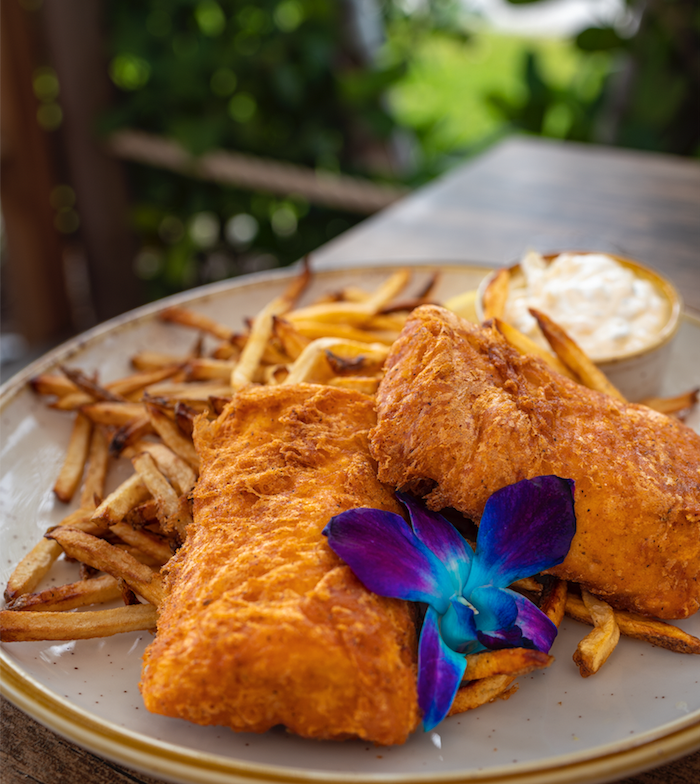
Standout salads include a sunshine summer salad that comes with mango slices and a lime dressing, or the blackened Cobb salad, which comes piled high with mixed greens, a hardboiled egg, julienned carrots, grilled corn, half a Hass avocado, enough bacon crumbles to make you forget it’s a salad, and blackened shrimp.
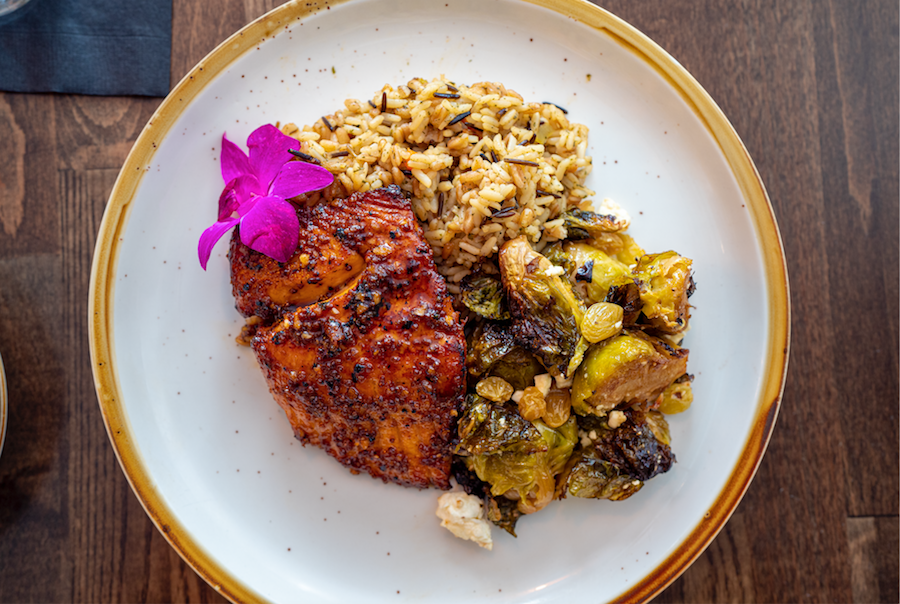
The practice of taking the spirit of something familiar and elevating it continues with the fish and chips, available on the restaurant’s lunch menu. The entrée comes with a diner’s choice of one or two 6-ounce hunks of beer-battered mahi mahi, with hand-cut fries on the side. A far cry from the mystery fish sticks found in your nearest frozen aisle, these lean and perfectly seasoned morsels have all the comfort of a dockside fish fry but with a more palatable dose of protein. Though salmon is hardly a Florida-centric fish, the tamari and maple glazed salmon warrants a nod as well. Served with a wild rice and farro blend, the glaze’s sweet and tropical profile takes the salmon away from its more conventional dressings and puts it in a Hawaiian button-down.
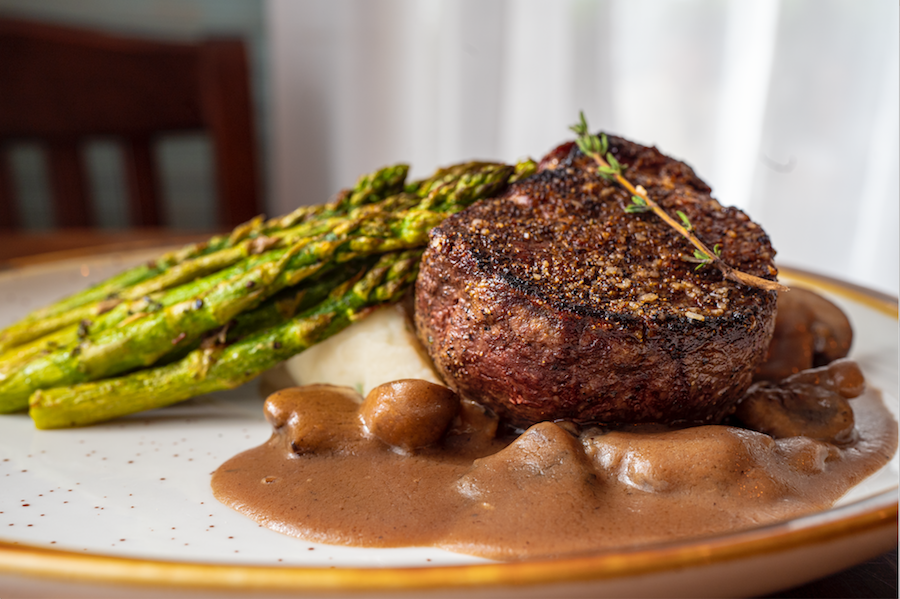
But it’s not all fish feasts at The Porch. Cattle ranching in what would become the continental U.S. began in Florida with the arrival of Spanish conquistador Hernando de Soto, who is believed to have landed somewhere near the mouth of the Manatee River in the 16th century. So, there is, in fact, something undeniably Floridian about The Porch’s USDA prime steak offerings. An 18-ounce ribeye will challenge the hungriest of homesteaders, but the filet mignon is a tasty little beef cupcake. Seasoned with salt, pepper and a touch of garlic, the outer sear adds a touch of crispiness to a cut cooked perfectly medium-rare. A traditional accompaniment of mashed potatoes and roasted asparagus make this an easy pick for the picky eater.
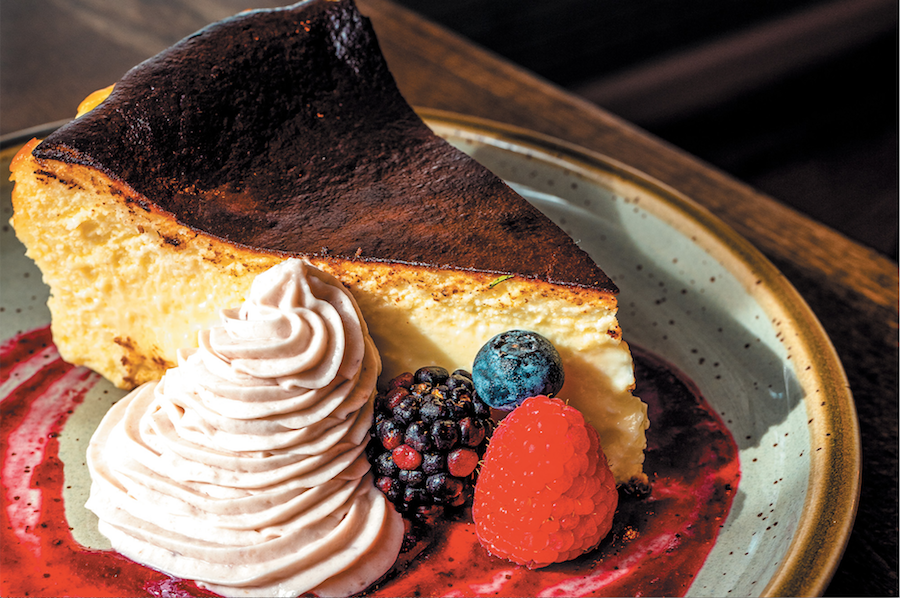
The Fosters could easily have chosen the kitschy route with their restaurant. They could have stuck with a menu of fried-from-frozen everything, trafficked primarily in pitchers of cheap beer and still made a killing. But rather than sell Old Florida like a cheap commodity, they chose to cherish it like an heirloom. It’s in the carefully restored fireplace, the small, oddly shaped rooms, the cheerful but not cheesy colors, the simple foods dressed up for a fancier and honest Old Florida experience.




